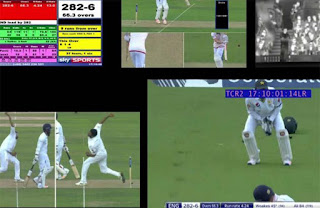Irfan heads home after suffering cramp
Mohammad
Irfan has been ruled out of the remainder of the England tour after
suffering cramps during his comeback match in the fourth ODI at Headingley.
Hasan Ali will replace him in the T20 squad.
A statement from the
PCB said that Irfan's cramp began in his hamstrings before developing in both
his right and left calf and that he will be sent back to the
National Cricket Academy to work on his fitness.
Irfan, who was called
into the squad after Mohammad Hafeez was ruled out, had started promisingly on
his return, removing Alex Hales and Jason Roy during a lively five-over opening
spell, and also troubled Eoin Morgan. After spending time off the field he
tried to bowl again for the 42nd over of the innings but could only manage one
delivery, a wide that did not touch the pitch, before walking off again.
Mickey Arthur, the
Pakistan coach, did not hide his frustrations in the dressing room but
later defended Irfan's call-up despite his very limited
recent cricket, insisting that "checks and balances" had been in
place.
Shortly before the
news of Irfan's withdrawal was confirmed Azhar Mahmood, Pakistan's bowling
coach, said it had to be acknowledged that Irfan's size made him a unique case.
"Definitely
Mickey was unhappy and as bowling coach I was unhappy as well. We had a chance
to win that game the other day," Mahmood said. "Unfortunately,
everyone gets cramp. He is a big guy and his body is totally different to a
normal human. But he got cramps."
Mahmood, who took on
his current role at the start of this series, replacing Mushtaq Ahmed who had
been bowling coach for the Test series, defended Pakistan's attack and said he
had seen improvement after they conceded the world record 444 for at Trent
Bridge.
"They bowled
really well [at Headingley] and if Irfan wasn't getting cramps, it was a
different ball game. Definitely, we didn't bowl well enough in Nottingham. If
you see Trent Bridge, every score is at least 381 in the last 50 over-games.
Unfortunately we didn't bowl well, but we are working hard on our skills, our
line and length and all disciplines.
"We didn't bowl
any no-balls in the last game, we bowled five beforehand so this is a positive
and we have a young guy, Hasan Ali, who is promising. He has shown some grit
and we see Umar Gul is back. He didn't bowl well in Southampton but he has come
back - it's totally different when you are playing in a match and in a tough
situation. Under pressure, you do different things, you know."










